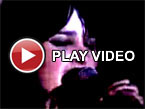Exactly one year on from his last album, Steve Hauschildt returns with his most commanding work to date. Dense and lush arrangements conjure introspective atmospheres that reveal not only his contribution to the band Emeralds, but his ever-evolving strengths as a solo artist. Recorded in Vancouver and Cleveland, nearly 20 different instruments were culled from the 1960s to the present. This lends the album a much wider palette than its predecessor, Tragedy & Geometry. It is still, however, a logical follow-up to that work as the title Sequitur subtly implies. Because of its rich instrumentation, there are classic yet cutting-edge soundscapes fashioned out of the idiosyncrasies innate to the copious synthesizers, drum machines, and vocal processing used on the album. A substantial work, Hauschildt hones in on the place of voice and androgyny in music.
From Steve Hauschildt: "I was very interested in the artificiality of vocal or choir-like sounds that emulate a person or group singing, and how this has evolved with the advancement of musical technology over the decades. I also sang myself and used a vocoder. This was not to sound robotic or to auto-tune notes, but instead used to remove the connotations of gender inherent in the vocal formants that define how we naturally assign gender qualities to sounds, particularly the human voice. It was interesting to discover that certain replicable sounds become 'androgynous' when they carry both masculine and feminine characteristics. I was inspired to carry this idea into music mainly because of the work of Camille Paglia, Rosalind Picard and Donna Haraway. In a sense, the album treads the imaginary boundary between Nature and Artifice. Of course it is within a postmodern trajectory, but not necessarily a statement on cyborg theory or feminism. Rather, Sequitur is a musical domain where these ideas freely collide and coalesce to form emotive states for the listener."
More information here.




